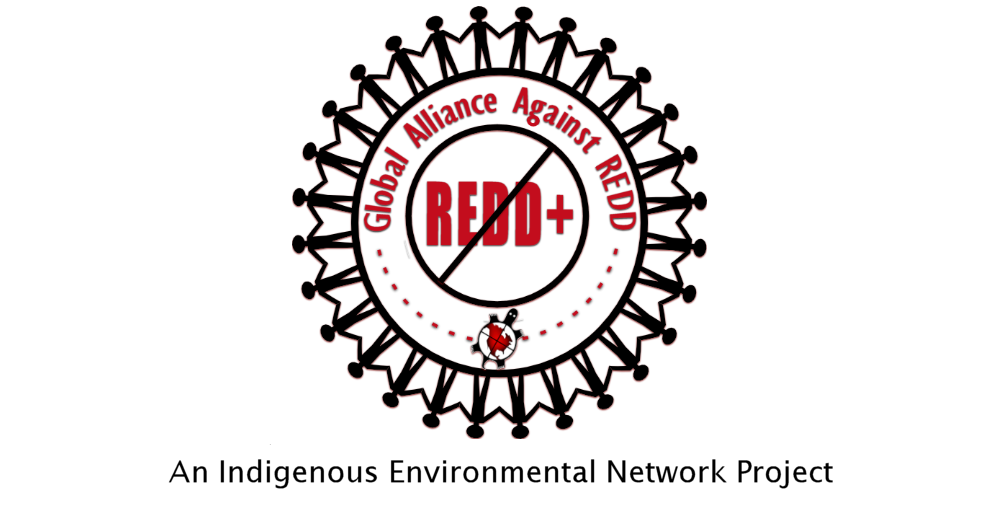 Yesterday, California’s Air Resources Board released a preliminary draft of proposed amendments to its Global Warming Solutions Act (AB 32) aimed at extending the cap and trade scheme beyond 2020. The big news for REDD watchers is that the ARB’s preliminary draft excludes making a decision on whether to allow REDD credits in California’s cap and trade scheme.
Yesterday, California’s Air Resources Board released a preliminary draft of proposed amendments to its Global Warming Solutions Act (AB 32) aimed at extending the cap and trade scheme beyond 2020. The big news for REDD watchers is that the ARB’s preliminary draft excludes making a decision on whether to allow REDD credits in California’s cap and trade scheme.
The preliminary draft is available here.
Tucked away on page 22 of the The 443-page preliminary draft is the following:
ARB staff is not proposing any regulatory amendments related to sector-based offset crediting or tropical forests in this rulemaking; rather, ARB staff anticipates that ongoing discussions with stakeholders will resume with additional informal public meetings outside of this rulemaking starting in the fall of 2016.
REDD, then, is being given a decision-making process outside the rulemaking process outlined in ARB’s preliminary draft. The REDD process will “resume” in Autumn 2016.
The rulemaking process
The process for the rulemaking (not including REDD) is as follows. On 19 July 2016, the Air Resources Board will present the preliminary draft to the Office of Administrative Law, which will conduct a review of the draft.
The Air Resources Board may revise the draft based on the Office of Administrative Law’s review. On 2 August 2016, the Air Resources Board will post the revised version of the draft on its website.
A formal public comment period will then run from 5 August to 19 September 2016.
On 22-23 September 2016, the Air Resources Board will hold a hearing to discuss the proposed amendments. A second hearing to vote on the proposed amendments will take place on 23-24 March 2017.
The REDD process
Here are the two paragraphs relevant to the decision about REDD in California:
4. Linkage with External Greenhouse Gas Emissions Trading Systems and Programs
…
b. Other Linkages and Linkage-Related PartnershipsSector-Based Crediting Programs, including Acre, Brazil
As described in Chapter I of this Staff Report, ARB held public workshops on a number of topics that helped inform the amendments contained in this proposal. Four of those workshops addressed the potential of approving the use of sector-based offset credits from the tropical forestry sector within the Cap-and-Trade Program by developing a set of regulatory standards against which potential partner jurisdictions’ tropical forestry programs would be assessed for linkage. More information on these workshops is presented in Chapter IX and Appendix F of this Staff Report. ARB staff identified the jurisdictional program in Acre, Brazil as a program that is ready to be considered for linkage with California. ARB staff received numerous informal comments following the workshops. Some comments suggested specific recommended approaches, some opposed any action, some supported ARB staff’s initial thinking as outlined in an October 19, 2015 staff paper and as described in the four workshops, and some recommended that staff conduct additional stakeholder engagement before proposing any regulatory amendments.
ARB staff has presented information about how linkage with a state-of-the-art, jurisdictional sector-based offset program can provide significant benefits to California’s Cap-and-Trade Program by assuring an adequate supply of high-quality compliance offsets to keep the cost of compliance within reasonable bounds, up to the quantitative usage limit for sector-based offsets. Linkage would also support California’s broad climate goals, as well as global biodiversity and tropical forest communities. (ARB 2015a) After reviewing the workshop results, and in order to ensure coordination with Québec and Ontario, ARB staff is proposing to continue discussing with stakeholders and partner jurisdictions, including Acre and others in the Governors’ Climate and Forests Task Force, on the regulatory path to optimize the multiple benefits of including sector-based offsets in California’s program, including through a linkage with Acre, in time to be used to meet compliance obligations incurred in the third compliance period and thereafter. ARB staff is not proposing any regulatory amendments related to sector-based offset crediting or tropical forests in this rulemaking; rather, ARB staff anticipates that ongoing discussions with stakeholders will resume with additional informal public meetings outside of this rulemaking starting in the fall of 2016. These meetings will also solicit and consider additional tools the State of California could employ to mitigate tropical deforestation, including measures to encourage sustainable supply chain efforts by public and private entities.
So discussions on REDD in California will re-start in Autumn 2016, separate from the rulemaking process outlined above.
ARB’s pro-REDD, pro-carbon trading, pro-neoliberal bias
The bias in the second paragraph is blatant. As is the bias in the White Paper on REDD that the Air Resources Board produced in October 2015.
The ARB makes no mention in this second paragraph of the problems associated with REDD, just the “significant benefits” to California’s cap and trade scheme of providing cheap carbon credits.
According to the ARB, REDD would support California’s climate goals. Of course the ARB doesn’t mention the awkward fact that carbon trading does not reduce emissions. For every REDD credit sold from Brazil, an additional tonne of CO2 would be emitted in California.
The ARB argues that REDD will benefit “global biodiversity” and tropical forest communities. Then again, it could undermine peasant farming and lead to increased land conflicts, without protecting biodiversity.
The ARB does not mention the low-income communities and communities of colour in California who are opposed to letting polluting industry continue to poison their air.
Kicking the REDD can down the road
Nevertheless, ARB staff are not proposing making a decision on including REDD in this preliminary draft. Instead ARB proposes discussions with “stakeholders and partner jurisdictions”,
on the regulatory path to optimize the multiple benefits of including sector-based offsets in California’s program, including through a linkage with Acre, in time to be used to meet compliance obligations incurred in the third compliance period and thereafter.
The third compliance period runs from 2018 to 2020.
One possible reason for the ARB’s decision to delay a decision on REDD is to try to avoid additional controversy. The most recent auction sold only 10% of the allowances put up for sale. The cap and trade scheme faces a lawsuit from the Chamber of Commerce that argues that allowance auctions function as a tax – an unconstitutional tax since it was introduced without the two-thirds majority in the Legislature that is required for new taxes.
Brown in talks with big oil
Meanwhile, oil industry leaders are talking to California Governor Jerry Brown’s administration. The purpose of the talks, according to Catherine Reheis-Boyd, the President of the Western States Petroleum Association, is “to improve the state’s current climate change programs.” WSPA has spent US$12.8 million on lobbying in the 2015-2016 legislative period, making it the top spending lobby group in California.
As Dan Bacher points out,
Underneath California’s reputation as a “green leader” is a dark and oily reality—the state is the third largest petroleum producer in the nation, and the oil industry is California’s largest and most powerful political lobby.
No wonder Brown’s administration is so keen on REDD and carbon trading.
